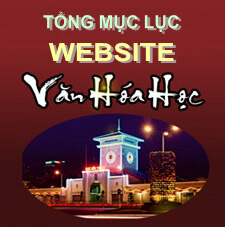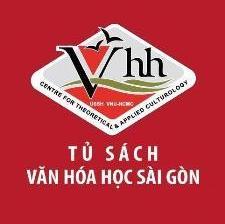The Cham is one of the 54 ethnic minority groups living in Vietnamese territory. With a population of over 100.000 people, the Cham has been residing mainly in Ninh Thuan, Binh Thuan (Central of Vietnam), Dong Nai, Tay Ninh (Southeast of Vietnam), An Giang (Southwest of Vietnam) provinces and Ho Chi Minh City (new name of Saigon city). Their dominant religions are Hinduism, Islam and Bani (an adapted form of Islam).
Champa and Chinese chronicle sources state that Islam was spread through the Champa kingdom around the late 9th century AD by Arabian and Javanese trade men. Under the reign of Indravarman III (918 - 959 AD), Po Klun Pilih Rajavara, a Cham Prime Minister, accepted many people of Javanese royal descents who took refuge in the Champa kingdom because of the Javanese Rajahs' cruel policy in that period. Through those people, Islam was directly preached in Cham noble families. Champa's king Po Alah also remained faithful to orthodox Islam. The king went to Mecca, the holy land, to research Islam for 37 years, after which he came back to Sri Bini (present day Binh Dinh) to rule the Champa kingdom for another 36 years (1000 - 1036 AD).
During king Po Alah's dynasty, both Hinduism and Islam flourished prosperously in the Amaravati area (Hue and Quang Nam at present). The "southward" process of the Viet people became powerful however in later centuries, which caused heavy distraction and disorder among the Cham people. Most of the Cham took refuge in the kingdom of Cambodia; others found their way to the sea and headed for the Hainam peninsular of China or southward to Java. Those who remained stayed together in Panduranga (now Phan Rang), the only remaining part of the kingdom. Thus, the spiritual activities of the Cham Muslim community in Panduranga became completely separated from the Muslim world. Although Islam still continued to flourish, it was adapted and influenced by Hinduism and indigenous cults until it became a new form of religion called Bani. The Cham who believe in Bani are called Bani Cham. They are socially isolated from the mainstream Cham community, who embrace orthodox Islam called Muslim Cham.
Catholic priest and French researcher Durant reasoned that the word "Bani" originated from the word "ibn" in Arabic. To Malaysian Muslims, "bin" means "son" to intend to say "Allah's son". The reasoning has been quoted by scholars, but some Cham researchers are suspicious about its exact source of origin, because there is no relationship between God and son on Muslim principle. Rather, it is a difference between Islam and Christianity. Two other Cham intellectuals, Dohamide and Dorohem, have researched the basics of Cham language and suggested that "Bani" means "religion". If this word is intermixed with the word "Cham", it becomes "Bani Cham", which implies that "the Cham embraces the religion". Here, the religion is understood as Islam. Among the Cham communities of Central Vietnam, two-thirds of people are Hindu and one-third is Bani. Many scholars discuss the tendency of Hindunization and indigenous cultinisation in Bani, which are presented in conceptions and religiously practiced rituals. The Bani Cham for instance puts Allah in the ranks of fairies and considers the holy land of Mecca to be a paradise of Goddesses. Bani priests furthermore, are not responsible for their religion as regulations of Islamic commandments. On the contrary, it seems that they virtually do the duty as Hindu offering helmets. These dignitaries also take charge of coordinating the villages (‘Play' in Cham) and people can recognise them by their white clothes sewn in models different from normal faithfuls' clothes. It shows that the Bani Cham community respects them so solemnly that they are nearly sacred in society. Besides these facts, wine, a beverage listed as Haram (completed forbidden) by Muslims, is still drunk by Bani priests in ritual ceremonies. They conduct the holy rituals on behalf of the Bani Cham community to respond to the obligations of the Muslim faithful, such as chanting the Qur'an, performing five prayers a day, observing fasting in the Ramadan month, engaging in charity (Zakat) and conducting a pilgrimage to the holy land of Mecca at least ones in a lifetime. When fulfilling these obligations, People hold sacred ceremonies to welcome the priests and they give them many gifts and offerings.
By contrast, the Bani faithful don't have to conduct the Islamic regulations or affirm Kalima Shahadah to establish that they only worship Allah as a unique creator. These Islamic obligations are all performed by the dignitaries. Another difference is that in principle, Hindu Cham do not consume beef and Bani do not eat pork. According to Mr. Dorahime's comments however, only Bani dignitaries obey this Haram; the normal faithful seem to be flexible in what they eat and drink. Furthermore, the intermarriage between the Bani Cham and heretics is forbidden. This paradox is depicted in Champa ancient literature through an epic poem, Araya Cham Ni, a work that tells an unfortunate love story between a Hindu Cham boy and a Bani Cham girl. Po Guru is the leader of the Bani dignitary system and coordinates a system of 6 mullah ranks called Po Achar. These people have a thorough grasp of transmitting handwritten Bible content from generation to generation. As a result, there are no original Arabic words left in their bible. When researching Bani, Bishop Durant also realized that there were some strange changes in the Qur'an statements. The dignitary always performs his final prayers inside the mosque while the faithful are seated near an entrance. Each group then takes turns coming to a stipulated place, kowtowing according to their Hindu style, which means they lays themselves down on the floor and pray. The offerings contained in trays are usually carried on their heads to the mosque by women.
In the 1906s, to ensure that the Cham's Bani in Central Vietnam would maintains their traditional customs, a few Cham intellectuals, with the support of the Association of Muslim Cham in Saigon, arranged to convert the Bani Cham to the orthodox belief of Islam. The movement didn't gain a satisfactory result for many different reasons. Still, as a result of the 1960s missionary work, Ninh Thuan province, besides the Hindu Cham and the Bani Cham communities, has a minority population of Muslim Cham in Van Lam and Phuoc Nhon villages. Among these Muslim Cham, a few people went on pilgrimage to Mecca and became Hajji Halimad, a respected title in Islamic society.



























